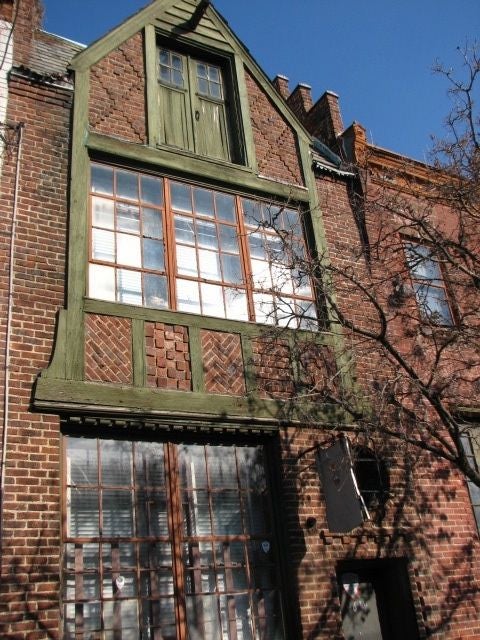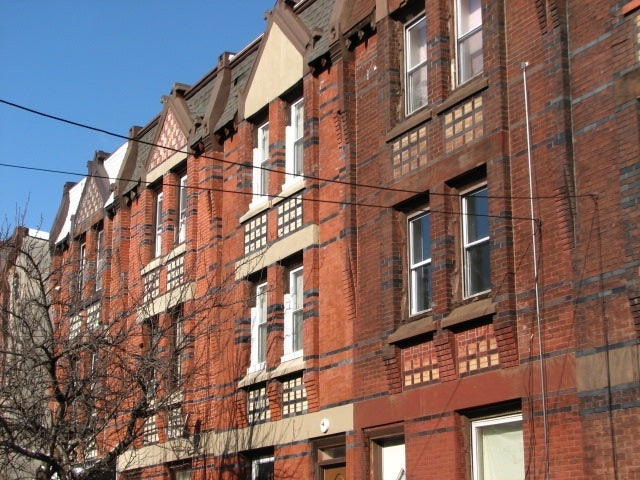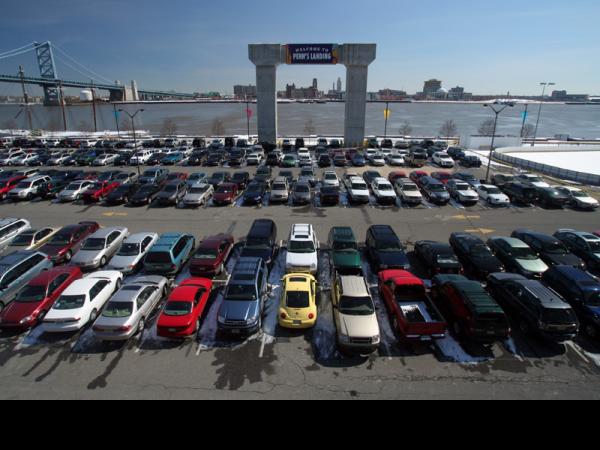Urban preservation group issues SOS for favorite sites
One of the more eclectic – one might say quirky – lists of endangered sites in the Philadelphia area was compiled last year by the non-profit group Save Our Sites.
SOS tapped out an appeal to protect some historic resources that are at the heart of heated preservation campaigns, including the Church of the Assumption, the old Family Court building, and the SS United States.
But the list also included the call to protect Eakins Oval, though there is no imminent danger to the erstwhile Parkway parking lot, and the concrete arch at Penn’s Landing, which stands as a reminder of the failed Camden-Philadelphia Tramway project.
SOS defines itself as an “urban preservationist” organization, said architect David Traub, the group’s spokesman. “We wanted to have a different character from the Preservation Alliance [for Greater Philadelphia],” which focuses on resources of historical and architectural significance. “We consider historic preservation as a component of urban preservation,” Traub said. “We’re not as concerned with pedigreed buildings. We like the mutts – the contributing buildings that give support to landmark buildings.”
The 200-member nonprofit organization began as an ad hoc group called Save Our Square, formed during the fight over Rindelaub’s Row, the strip of four 1840s buildings that were eventually razed in 2006 for the 33-story 10 Rittenhouse Square condo project.
It lost that battle, but continue to wage war on neglect or ill-conceived development of sites they love and value. The all-volunteer group has no officers or committees, and meets just twice a year to discuss cherished sites and nominate those that should go on the endangered list.
One member fell in love with the arch at Penn’s Landing, which was meant to be the landing point for an aerial tram that would lure visitors to the waterfront, Traub said. “He believes it could be embellished to become a marker commemorating the landing of William Penn. He sees its potential, and he likes it.
“The key word for us is ‘value.’ It need not be historical in the strict sense of the term,” Traub said. “It’s more important that it contributes to the character of the city.”
Traub encourages the “blind viewing” of buildings, landscapes and sites. He compares the process to “blind tasting” of wines, in which the bottle labels are removed or covered.
“By blind viewing I mean, one judges a building without knowing who the architect was, when it was built, who the owner was, and what if any history is attached to it. Yet one goes on to critically appraise the building and assign value to it, if there is any,” he said. “With this skill the preservation community would be able to identify valuable sites without being hampered by the existence or non-existence of a pedigree. Again, value is the key word.”
Other sites on the SOS endangered list:
Metropolitan Opera House, 858 N. Broad St., was built in 1908 by architect William H. McElfatrick and developed by Oscar Hammerstein. The building is in need of restoration inside and out.
Reading Viaduct, the remnant of the former Reading Railroad line that begins at Vine Street and ends at Fairmount Avenue, is an ideal opportunity for an elevated linear park, SOS believes.
Eakins Oval, in front of the Museum of Art, is being misused as a parking lot, “so in that sense it is endangered,” Traub said.
Commercial building adjacent to Overbrook Train Station, 2135 N. 63rd St., “resembles in style some of Louis Sullivan’s small buildings in the Midwest” and is currently in “bad condition and in need of restoration,” according to SOS.
Musical Arts Club, 1800 block of Ranstead Street, was designed by Will Price and is “a treasure tucked away” that “begs for restoration.”
Northeast Manual Training School, 7th Street and Lehigh Avenue, designed by J. Horace Cook in 1905, is currently vacant and in “a deteriorating condition, serving only to blight the immediate surrounding neighborhood.”
West Maplewood Mall, near Chelten and Germantown Avenues, is a “quaint, vehicular-free Victorian street” lined with viable but struggling businesses.
Letitia Street House, 3400 W. Girard Ave., and Hatfield House, 3201 W. Girard, are 18th century structures owned by the city and in need of restoration.
700 block of Chestnut Street includes the former Union Trust Company and Quaker City National Bank, built by Willis Hale in the late 19th century. “When more of these buildings are renovated, it will stand as one of the finest blocks in the city, with great potential for attracting the best occupants,” SOS says.
Thompson Street Houses, 1821-1833 Thompson and 1619 Thompson, display “elaborate, multi-colored brick work and decorative terra cotta insets, but are in need of restoration.” The house at 1619 is “one of the most picturesque houses in central Philadelphia,” SOS proclaims.
Contact the writer at ajaffe@planphilly.com.
WHYY is your source for fact-based, in-depth journalism and information. As a nonprofit organization, we rely on financial support from readers like you. Please give today.






